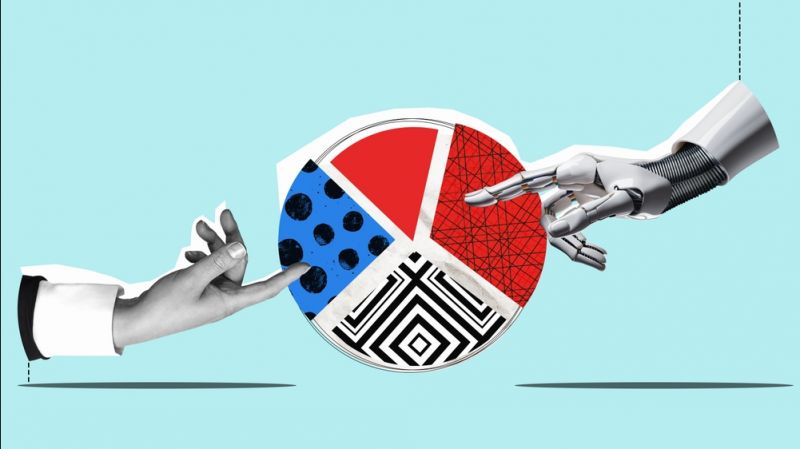In Search of Advertising’s Multimedia Sweet Spot
Low-budget media channels have a surprising way of boosting the effectiveness of big-ticket TV placements

- Marketers generally believe that ad campaigns involving placements on multiple media platforms will yield synergistic effects — where the combined promotional boost will exceed the sum of the individual effects.
- A new study shows that 44 percent of media spend produces synergistic (positive) effects and 21 percent produces antagonistic (negative) effects.
- Low-budget media spend, such as a newspaper ad or a radio spot, can boost the effectiveness of high-budget media, such as TV advertising.
- Marketers can see a double digit sales lift if they more strategically plan which channel to use in tandem with other channels.
Even though we are well into the age of analytics, marketers still tend to base their multi-channel campaigns on convenient data points, accepted wisdom, and raw instinct.
The belief in the power of synergy is a good example of this in action. For many marketers, a campaign that involves placements on multiple platforms — say a TV spot, a newspaper ad, a Facebook sponsored post, and a downtown billboard — is like an alchemical process: the combined promotional boost will exceed the sum of the individual effects. The strengths of each medium will be leveraged and the weaknesses minimized.
But does marketing synergy really happen? Trying to separate all the cross-current effects within a multimedia campaign is a complicated affair. Small and medium-sized firms do not have the analytical resources to find answers. Even big firms that do market response modelling mostly look at the effectiveness of each channel; that doesn’t say much about interactions among different channels.
“Ad budgets are most often set top-down and the attitude of some brand managers is ‘spend it or lose it,’” says Ceren Kolsarici, Ian R. Friendly Fellow of Marketing of Smith School of Business. “When they don't invest in analytics, they use heuristic methods, their judgment, and experience from the field to decide on ad spending and to try to leverage all available media options.”
The Costs of a Blind Approach
Kolsarici has shown that marketers base 70 to 80 percent of their decisions on heuristics —essentially, easy-to-apply rules of thumb such as advertising-to-sales ratio and competitive parity — complemented by some experimentation.
When it comes to sophisticated cross-channel media planning, however, matters get a lot more complicated. Kolsarici argues that firms leave a lot of money on the table by blindly assuming that cross-media interactions will always translate into sales gains. Her latest research shows that synergistic effects are hardly a sure thing.
“We actually investigate the profit implications of how much money they’re losing by just blindly approaching this media planning process,” she says. “It's double digits; they can have a double digit lift if they more strategically plan which channel to use with what other channels.”
Kolsarici’s study is the first to systematically examine how media channels interact at different spending ranges. She started with spending and sales data from select durable products (hybrid autos) and packaged goods (yogurt and beer) — the same suite of data points typically used by marketers as a basis for media spend and scheduling decisions. She controlled for critical marketing mix variables such as price, promotions, competitor sales, and seasonality. She then fed that data into a machine learning model based on the MARS (Multivariate Adaptive Regression Splines) approach, a well-proven means of measuring and interpreting complex interaction effects.
High-Budget Media a Blessing and a Curse
When Kolsarici analysed the data, she found the synergy story was much more nuanced than most marketers assumed, and that “it’s not the de facto outcome.” Indeed, the study showed that 44 percent of media spend produces synergistic (positive) effects and 21 percent produces antagonistic (negative) effects. That’s a failure rate that would likely surprise many managers.
Kolsarici then drilled down to compare the effects from low-budget media (newspapers, internet, outdoor, and radio) and high-budget media (national and regional television and magazines).
She found that interactions involving low-budget media were just about guaranteed to produce synergistic effects. Interactions involving high-budget media, however, were “both a blessing and a curse” — though they pack a punch, TV spots can suffer from saturation and inconsistent messaging and be a drag on a multimedia ad campaign.
“Message consistency could be the key in producing synergies even between high-budget media,” says Kolsarici. “The most successful multimedia campaigns of recent years, such as the The Man Your Man Could Smell Like for Old Spice or the Campaign for Real Beauty for Dove, effectively use multiple executions and media channels to communicate a unified message to the audience.”
Beyond the positive and negative effects of multimedia marketing, Kolsarici’s findings on “asymmetric” effects, which had not been identified empirically before, are particularly instructive. These occur when some media channels lift or depress the effectiveness of other media channels. Kolsarici found that these effects do happen, and that it’s the lowly channels that do the heavy lighting: low-budget media spend, such as a newspaper ad or a radio spot, can boost the effectiveness of high-budget media, such as TV advertising, perhaps due to the change in pace.
That means managers can see a better sales lift from their media spend at low incremental cost or even spend less without suffering a drop-off. The key is to avoid the saturation that can come from high-budget media.
Kolsarici empirically shows this in the case of Yoplait. “A $10,000 allocation shift in favour of internet from regional TV leads to a $30,000 sales lift, which is an incredible top-line impact with no increase in budget,” she says.
Identifying and leveraging such asymmetric media interactions would lead to more effective campaigns at lower budgets and more resources allocated for societal welfare and corporate social responsibility initiatives, which are critical for today’s brands, Kolsarici says.
A DIY Model Within Reach
This is good news for big marketers and small. As Kolsarici points out, MARS and other machine learning methods are becoming more accessible through software packages on various programming platforms. Marketers can apply their own data to these methods to learn how various media channels work together and in what spending ranges. “It's not too complex once you understand how the algorithms works,” she says.
You do need high-quality marketing data, but that should be well within the ability of even smaller firms to source. “Small firms sometimes have better quality data than big firms, which are very centralized,” says Kolsarici. “Information transparency is lacking in big firms which make them not as flexible in sharing data internally and applying insights and getting approvals at multiple levels.”
For Kolsarici, the work continues to further develop the synergy model. Next up in her research pipeline: What are the profit implications? How can channels be optimized over time? And can they be optimized at the individual consumer level, particularly now that digital channels can track individual exposure and responses?
“It's really a black box for managers,” she says. “They take an action and they observe a market response. It could be sales or market share. We’re trying to see how those inputs relate mathematically to the outputs. Our job as modelers is to decipher that black box.”
—Alan Morantz





